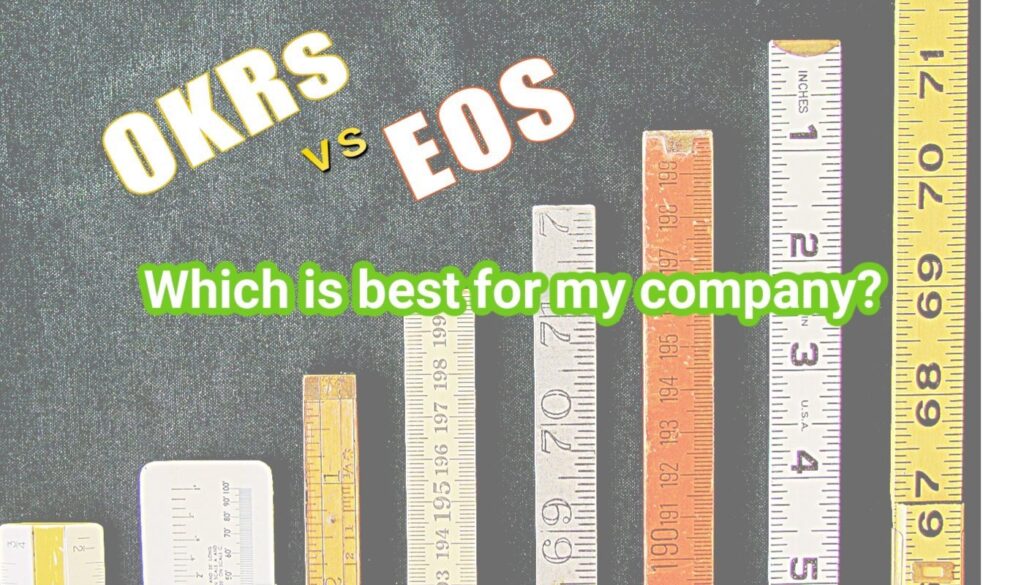As companies grow and scale, injecting accountability structures into the culture becomes critical. As Peter Drucker famously said, “If you can’t measure it, you can’t manage it.” Currently, two of the most popular goal setting frameworks are John Doerr’s Objectives and Key Results (OKRs) method and Gino Wickman’s Entrepreneurial Operating System (EOS).
Legendary Silicon Valley investor, John Doerr, has evangelized the OKR method developed originally by Intel CEO, Andy Grove, to all sorts of Silicon Valley companies including Google, Intuit, The Gates Foundation, and Bono’s One Foundation just to name a few. Doerr published Measure What Matters a few years ago as a guide for companies to adopt this proven method of focusing employees on key priorities and tracking their results.
Gino Wickman’s Entrepreneurial Operating System is detailed in his book Traction. EOS is a comprehensive accountability system that includes goal setting along with methods for establishing a vision, putting people in the right seats, developing process, and using data to drive decisions.
OKRs offer a narrow focus – setting measurable goals and tracking progress. Typically, goals are set and measured on a quarterly basis at the individual, team and company levels. When I worked for Google, we used the OKR method. Our goals were established and posted on internal intranet site for all employees to see. Part of the accountability is the transparency of sharing goals across the organization. Implementing the OKR method is fairly straight forward with tools and resources available on the Measure What Matters website. It does not require a costly consultant, but does require time and organization wide adoption in order to be effective. The biggest hurdle tends to be learning how to write effective measurable goals and ensuring that systems are in place to capture the data needed to track progress.
The EOS method has a broad focus including accountability, culture and people. EOS goals are set annually with weekly and quarterly evaluations. EOS follows a process of measuring key performance indicators (KPIs) that enable businesses to remain accountable for achieving their goals. Adopting the EOS starts with the management team. At the outset, the team adopts a meeting structure and cadence including weekly meetings and quarterly offsites. Evenutally, the entire organization adopts the EOS. EOS is implemented by a certified professional implementer through a series of modules over time, each with specific and measurable outcomes. The implementer guides the company for roughly 2 years. EOS is generally driven by executive leadership and requires considerable executive time and commitment for success.
Both systems provide an accountability structure that uses metrics for businesses to measure their success. Both are good solutions for improving accountability, clarity, alignment, transparency, and performance.
Which one is best for my company? Here are some considerations.
Choose OKRs when:
-
You have an experienced CEO and a clear vision
-
The problem you are trying to solve is mostly about clarity, transparency, and accountability
-
You already have effective systems and/or a coach or guide in place
-
You already have some good systems in place that capture data
Choose EOS when:
-
The problem(s) you are trying to solve is to bring order to chaos on multiple fronts like setting a vision, hiring talent, and building systems and processes to capture data
-
You have a new or inexperienced CEO and/or leadership team who needs a comprehensive system and an accountability partner in a coach
-
You (or your board) are ready to commit the time and the funds to hire an implementer for two years
Whichever route you choose, be aware that instituting accountability systems takes time and requires a shift in the organizational culture. Be thoughtful and deliberate in your approach and consult a change management expert for best results.
Contact us at PeopleCap.com to help sharpen your focus.

